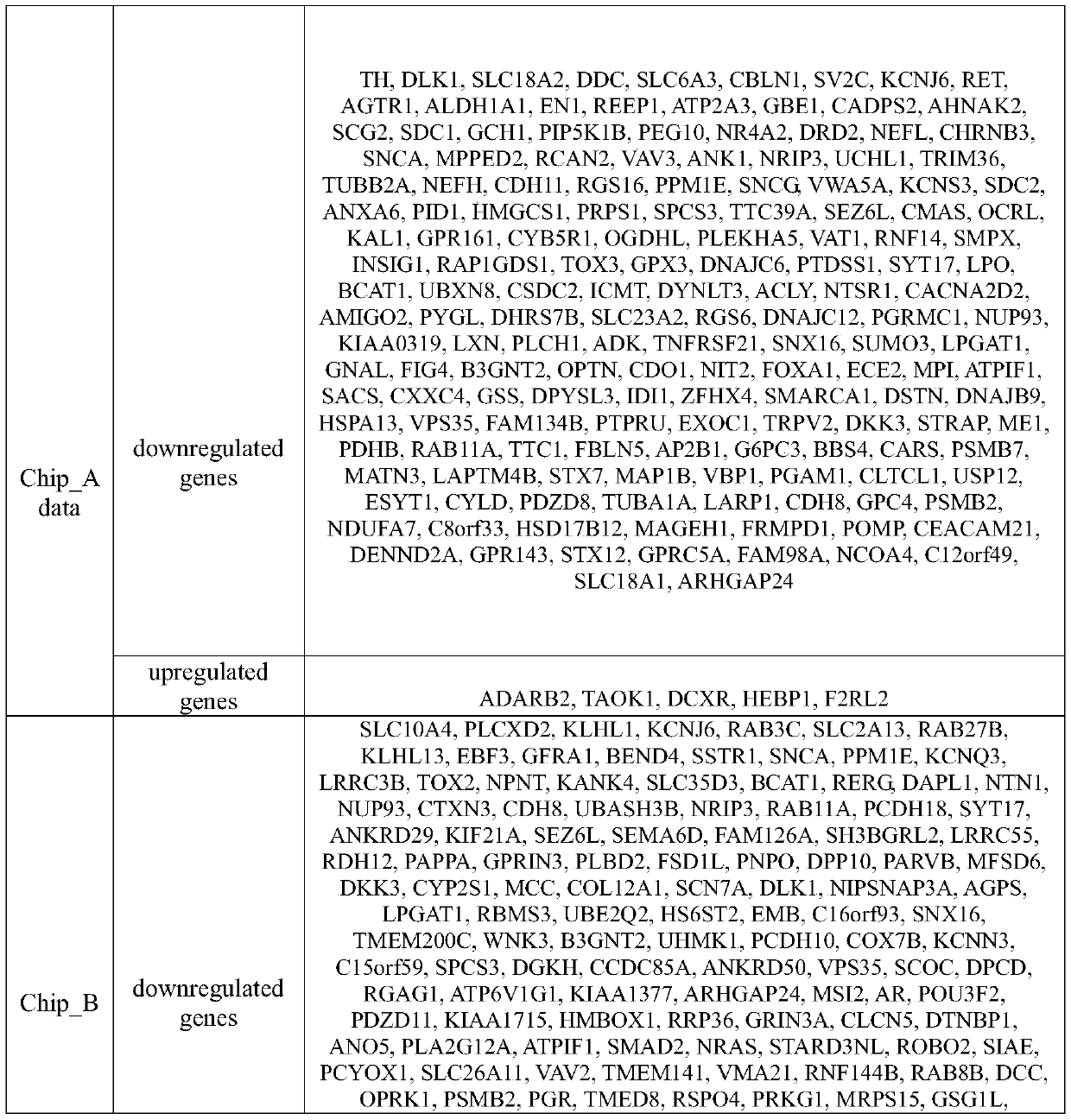Medicine for improving activity of midbrain substantia nigra dopamine neurons to preventing Parkinson disease
A Parkinson's disease and neuron technology, applied in the field of biomedicine, can solve the problems of no fulvestrant, loss of ability to produce dopamine, and reduced buffering capacity of exogenous dopamine drugs, so as to save time and overcome limitations Effect
- Summary
- Abstract
- Description
- Claims
- Application Information
AI Technical Summary
Problems solved by technology
Method used
Image
Examples
Embodiment 1
[0032] This embodiment provides a method for screening and improving the activity of dopamine neurons in the substantia nigra of the midbrain to prevent and treat Parkinson's disease, comprising the following steps:
[0033] S1. Gene expression data collection:
[0034] Gene expression data were obtained from public GEO data. GEO datasets contain microarray, next-generation sequencing, and other forms of high-throughput genomic data submitted by research scholars. From GEO, we downloaded 6 genome-wide gene expression data sets, namely gene expression data of 10 brain regions (GSE60862), spatiotemporal gene expression data (GSE25219), normal human brain tissue gene expression data (GSE45878, GSE34865) , Parkinson's disease case-control gene expression data (GSE8397) and mouse brain gene expression data (GSE16496).
[0035] S2. Construction of normal human brain co-expression network:
[0036]A gene co-expression network was constructed using the GSE60862 dataset. Genes in 1...
Embodiment 2
[0059] Example 2 Fulvestrant cell experiment proof
[0060] 1. Fulvestrant can inhibit the down-regulation of PD gene
[0061] The rotenone-induced Parkinson's disease model in Step 7 of Example 1 was used to verify the effect of fulvestrant on the PD gene. In the rotenone-induced Parkinson's disease model, the inventors treated cortical neurons with five treatments of DMSO, CCCP, ROT400nM, ROT400nM+FUL200nM and FUL200nM. First, cortical neurons were pretreated with 200nm rotenone for 2 hours, and then treated with different concentrations (100nm, 200nm and 300nm) of fulvestrant for 24 hours. Cortical neurons treated with CN (control group), DMSO (2%), rotenone and different concentrations (100nM, 200nM and 300nM) of fulvestrant were detected by RT-qPCR method. The purpose of the DMSO treatment was to test the effect of the solvent. Statistical analysis was performed using GraphPad Prism 7.0 software.
[0062] The result is as figure 1 As shown, after treating the Parkins...
PUM
 Login to View More
Login to View More Abstract
Description
Claims
Application Information
 Login to View More
Login to View More - R&D
- Intellectual Property
- Life Sciences
- Materials
- Tech Scout
- Unparalleled Data Quality
- Higher Quality Content
- 60% Fewer Hallucinations
Browse by: Latest US Patents, China's latest patents, Technical Efficacy Thesaurus, Application Domain, Technology Topic, Popular Technical Reports.
© 2025 PatSnap. All rights reserved.Legal|Privacy policy|Modern Slavery Act Transparency Statement|Sitemap|About US| Contact US: help@patsnap.com



